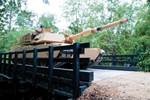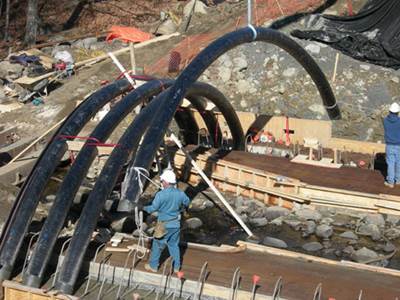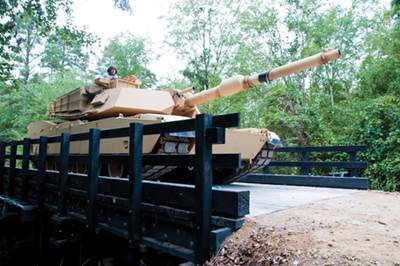The cost equation
Keynote speakers at ÂÌñÏ×ÆÞ Expo 2009 delivered news both sobering and encouraging to those who are trying to predict what the future holds for composites in the postrecession manufacturing economy.
At the end of September, we here at CT hosted the ÂÌñÏ×ÆÞ Expo 2009 in Schaumburg, Ill. As usual, our conference gurus Scott Stephenson and Ralph Jessie put together a robust keynote speaker lineup that featured, among others, Jim deVries, staff technical specialist and manager of the Manufacturing Research Dept. at the Ford Research Laboratory, and Dr. Habib Dagher, director of the AEWC Advanced Structures and Composites Center at the University of Maine (to see our CW Expo report, click on the link under "Editor's Picks," at right).
DeVries talked about the prospects for increased carbon fiber use in cars. He suggested that the best use of carbon fiber in cars might be via sheet molding compound (SMC), but only if the cost of raw carbon fiber comes down to $5/lb. As it stands, he said, the current cost per pound of weight saved with carbon fiber SMC ($10.60) does not come close to that for aluminum ($1.00) or fiberglass SMC ($3.33). Even if carbon fiber comes down to $5/lb and a fabrication process is developed that can cost-effectively produce 200,000 units or more per year, he doubted that manufacturers of raw carbon fiber would be able to reliably provide enough fiber for the 75 million lb of carbon SMC that the auto industry would consume annually.
This is sobering. If carbon fiber SMC is ever to find a significant home in production vehicles — especially in body panels — it has to buy its way in, and it’s clear that the Fords of the world are watching material price points closely. I wonder, though, if hurdles for carbon fiber are that high: How close is the industry to a high-speed carbon fiber process to produce body panels? Are body panels on vehicles expected to provide structural support to a vehicle, and if not, then how does that change the product development equation? Finally, does it make sense, and is it fair, to simply replace metal parts with similar parts made with carbon composites? With the automotive industry shifting so many paradigms of late, this seems like a good time to reconsider automobile design to optimize components for composites.
In the infrastructure market, the cost equation appears to be shifting in favor of composites, as revealed by Dr. Dagher during his keynote. Dagher helped develop the “bridge in a backpack” composites technology at the Advanced Structures and Composites Center (see "Bridge cost cut with inflatable arches," under "Editor's Picks"). He reported that this technology is now competitive on a first-cost basis with concrete and steel. This is important because for years composites have had to be “sold” into infrastructure applications on the basis of valid, but too-easily-ignored true-cost calculations, derived from lifecycle analysis that factors in the composite’s extended service life and low maintenance. Further evidence of this competitiveness can be found in this issue, as well. Our “Engineering Insights” feature this issue (see "Tough I-beam bridge for tank traffic," under "Editor's Picks") highlights a thermoplastic composite bridge developed to support military vehicles.
As the Ford data show, it might be a little early to declare all composites so competitive, but it’s encouraging to see glass and carbon fiber considered for their durability, strength, light weight and thrift.
Related Content
Welding is not bonding
Discussion of the issues in our understanding of thermoplastic composite welded structures and certification of the latest materials and welding technologies for future airframes.
Read MoreBladder-assisted compression molding derivative produces complex, autoclave-quality automotive parts
HP Composites’ AirPower technology enables high-rate CFRP roof production with 50% energy savings for the Maserati MC20.
Read MoreInfinite Composites: Type V tanks for space, hydrogen, automotive and more
After a decade of proving its linerless, weight-saving composite tanks with NASA and more than 30 aerospace companies, this CryoSphere pioneer is scaling for growth in commercial space and sustainable transportation on Earth.
Read MoreThe potential for thermoplastic composite nacelles
Collins Aerospace draws on global team, decades of experience to demonstrate large, curved AFP and welded structures for the next generation of aircraft.
Read MoreRead Next
Bridge cost cut with inflatable arches
Stay-in-place composite formwork shortens installation, doubles service life of concrete bridge structure.
Read MoreTough I-beam bridge for tank traffic
Immiscible polymer blending combines the strength of HDPE and the stiffness of glass-reinforced PP to create I-beams with specific strength greater than steel.
Read MoreCeramic matrix composites: Faster, cheaper, higher temperature
New players proliferate, increasing CMC materials and manufacturing capacity, novel processes and automation to meet demand for higher part volumes and performance.
Read More












